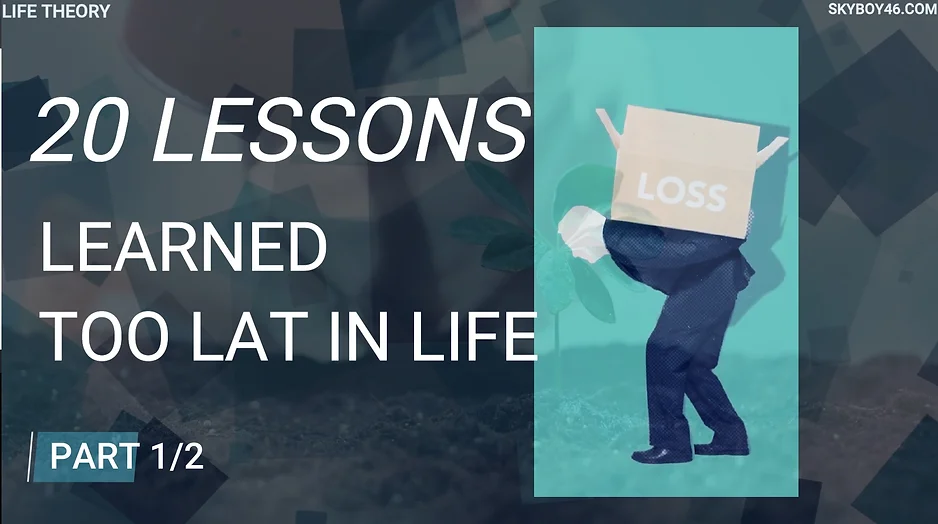Recessions may seem like economic nightmares, but what if they’re just another cycle, much like fashion trends that fade and return? History shows that downturns come and go, often unpredictably, yet they always give way to recoveries. While uncertainty looms and financial pressures rise, understanding the patterns of past recessions can provide a roadmap for resilience. The key isn’t fearing the downturn—it’s learning how to navigate it, knowing that every low is eventually followed by a high.
SUBSCRIBE: https://www.youtube.com/@LifeTheory46
VISIT: https://linktr.ee/lifetheory46
Get You Monthly Life Stories in Advance & Our Premium Learning Packs HERE:
When Recessions Loop Back Around- Life Stories 321
Today, we’re diving into a topic that tends to cast a long shadow whenever it comes up: recessions. But don’t brace for gloom just yet; this isn’t about adding weight to the burdens already on your shoulders. Quite the opposite. It’s about finding that sliver of hope, even as the world around us seems to lurch from one extreme to another, with shifting temperatures and divided societies. Let’s reframe how we think about recessions, recognizing them for what they truly are—periods that come and go, much like the cycles we see in other aspects of life.
The reality is, recessions aren’t some new phenomenon. They’re simply part of an economic rhythm that, much like fashion trends, moves in loops. Trends give us a perfect metaphor here: they come and go, reappearing in different forms, but always circling back. Look at the resurgence of 90s fashion this past year. Skinny jeans faded as looser fits took over, reflecting a shift towards comfort and a laid-back style that feels right for today’s mood. Social media platforms like TikTok have sped up these shifts, driving trends faster than ever, sometimes unpredictably—just like economic cycles.
The loops aren’t confined to fashion. Economies also experience ebbs and flows, expanding and contracting in rhythms that span years. In the past half-century, we’ve seen 11 recessions, which means roughly every six years, the world has dipped into another downturn. It’s easy to see why it feels like a nearly constant state. Even if some recessions are brief or barely noticeable, the larger ones leave marks, making them impossible to ignore.
Before the 2007-2008 financial crisis, the typical recession would last about 11 months. The crash in 2008, however, dragged on for around 18 months and left deep scars across the global middle class. Contrast that with the 2020 recession, brought on by the pandemic, which lasted a record-short two months. The very nature of recessions reflects this unpredictability. Sometimes they hit like a storm, and other times, they’re gone in a blink.
So, what exactly triggers a recession? In essence, it’s an economic slowdown marked by a decline in GDP, rising unemployment, and falling retail sales. It’s a cycle inherent to capitalist economies, where growth phases eventually give way to periods of contraction. Often, by the time we’re officially told a recession is here, we’ve already been living in it for a year. The signs—job losses, tighter budgets, dwindling sales—become obvious long before experts formally acknowledge the downturn. But there’s hope in that realization because it means recovery often follows sooner than we realize.
The world’s leading economists don’t always agree on the recession’s timeline. Some say we’re just entering it; others claim we’re right in the thick of it. For a while, some countries reported negative GDP growth for two quarters, meeting the textbook definition of a recession, while others were already bouncing back with positive figures by the third quarter. The truth is, pinpointing exactly where we stand isn’t always straightforward, especially when the patterns are as erratic as they are today.
Of course, the current economic struggles are real, with inflation squeezing people’s wallets across the globe, a housing crisis, and rising living costs. It’s easy to romanticize the past, to look back at the 80s and 90s and think life was simpler, more prosperous. But economic history tells us that no era has been without its own struggles. Those times saw their share of recessions too, just as this one does.
The economic loop rolls on, like the rise and fall of trends on the runways. Just as bell-bottoms gave way to mom jeans and then to wide-leg pants, we see financial conditions shifting in cycles. There will be times when it feels like everything is tightening, and then moments of expansion will follow, allowing economies to breathe and grow again.
If your current situation feels overwhelming, remember: people have navigated this storm countless times before and emerged stronger. There’s no denying that the uncertainty and challenges are daunting, but knowing that recessions are a natural part of economic cycles can offer a sense of resilience. What matters most is how we prepare for the dips and take advantage of the upward swings.
You’re not alone in this. The world has weathered these cycles before, and it will continue to do so. Recessions come and go, just like any other season. They may loop back around, but so do the recoveries. As daunting as the downturn may feel, there’s always a resurgence on the horizon. You will get through this—just as many have before.
–> Read More Life Stories Here:
https://www.lifetheory.us
https://www.lifetheory.eu
Buy all of our Life Stories & Our Premium Learning Packs. Listen or Read to them anytime you want. Have them Forever.
You can get each monthly lesson on our website at https://www.skyboy46.com/store
SHARE THIS STORY
Visit Our Store
SHOP NOW
www.skyboy46.com & www.myskypet.com
Designed For Pet Lovers & Introverted Souls
Sport, Hobbies, Motivation, Music & Art






~EXPLORE MORE~
www.linktr.ee/skyboy46


